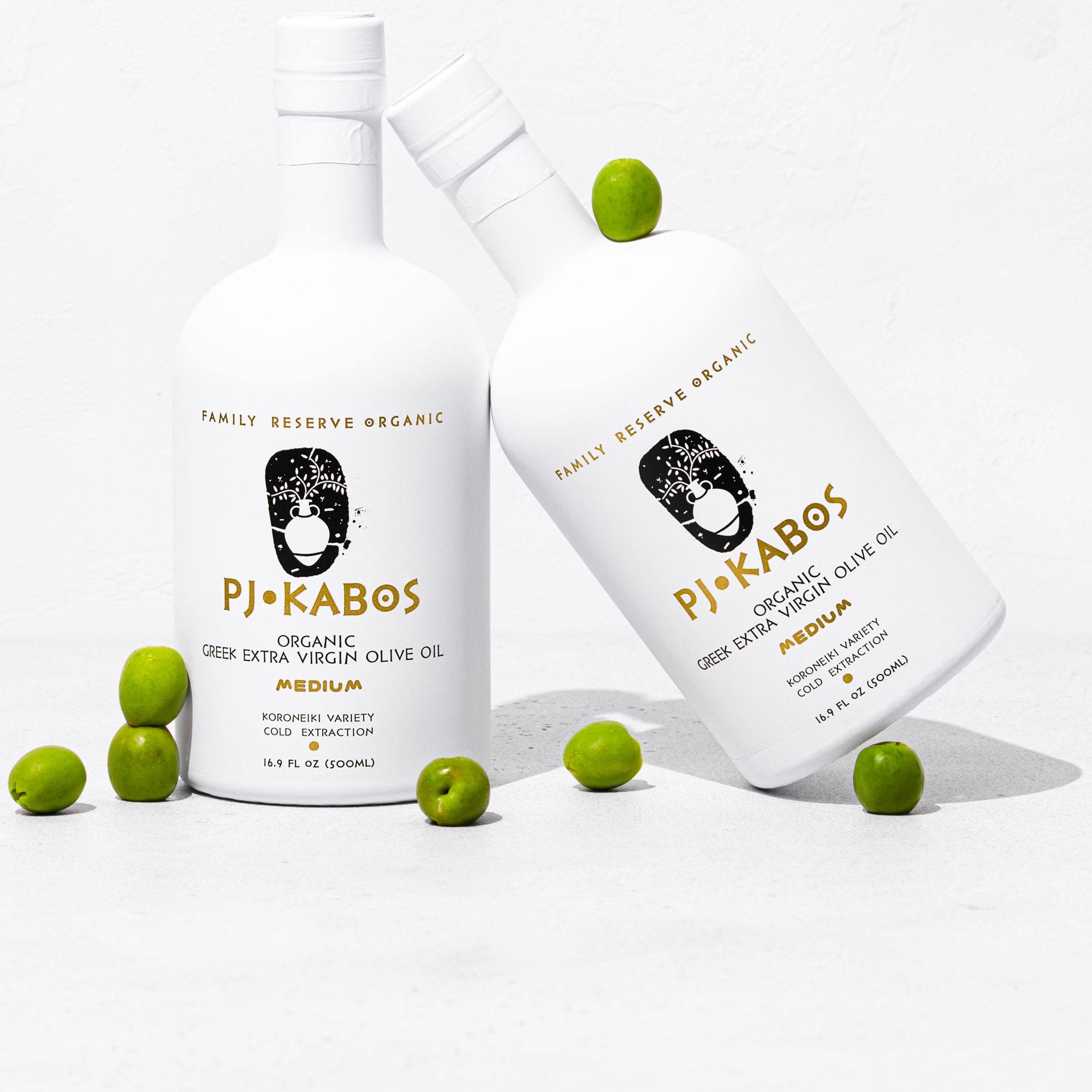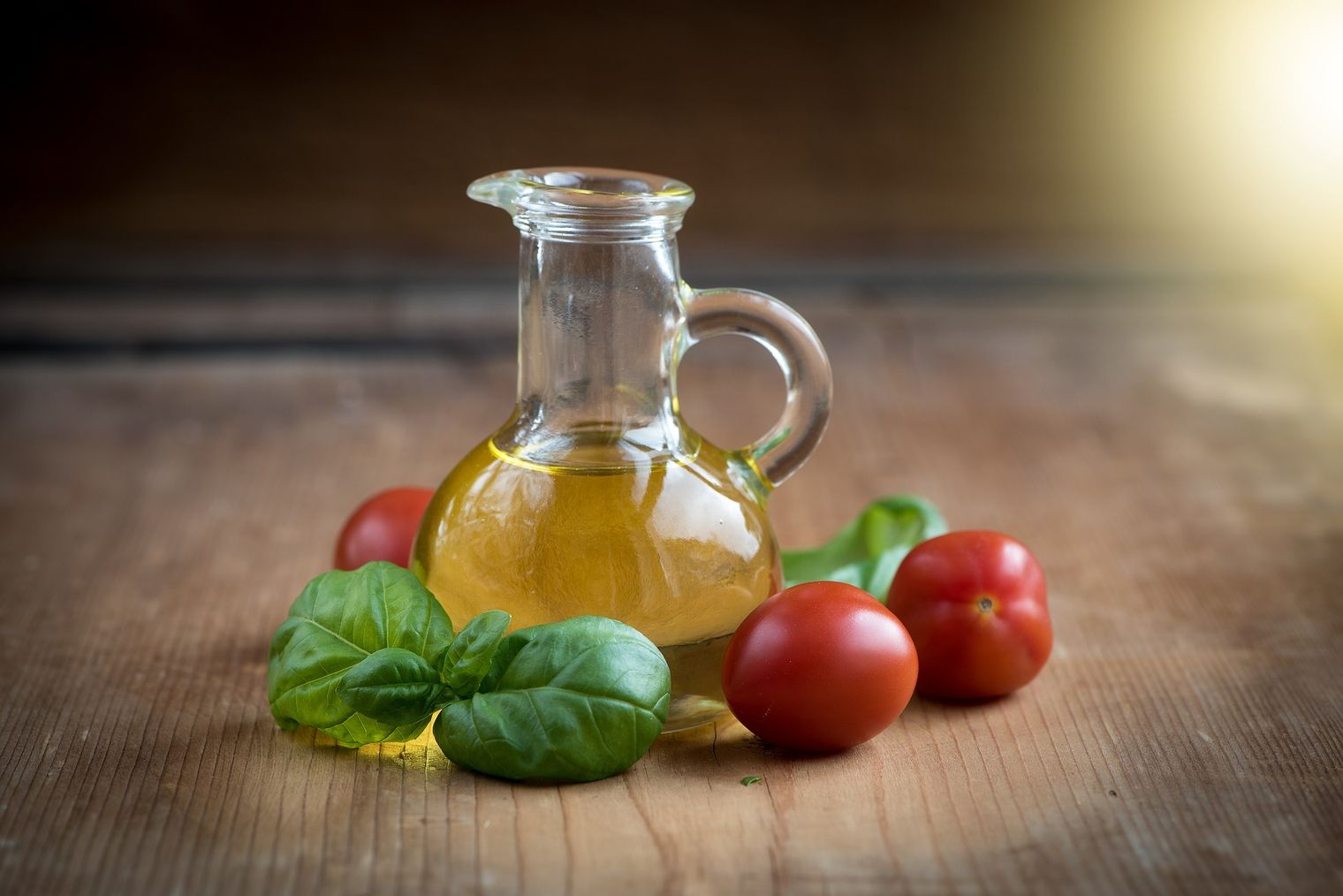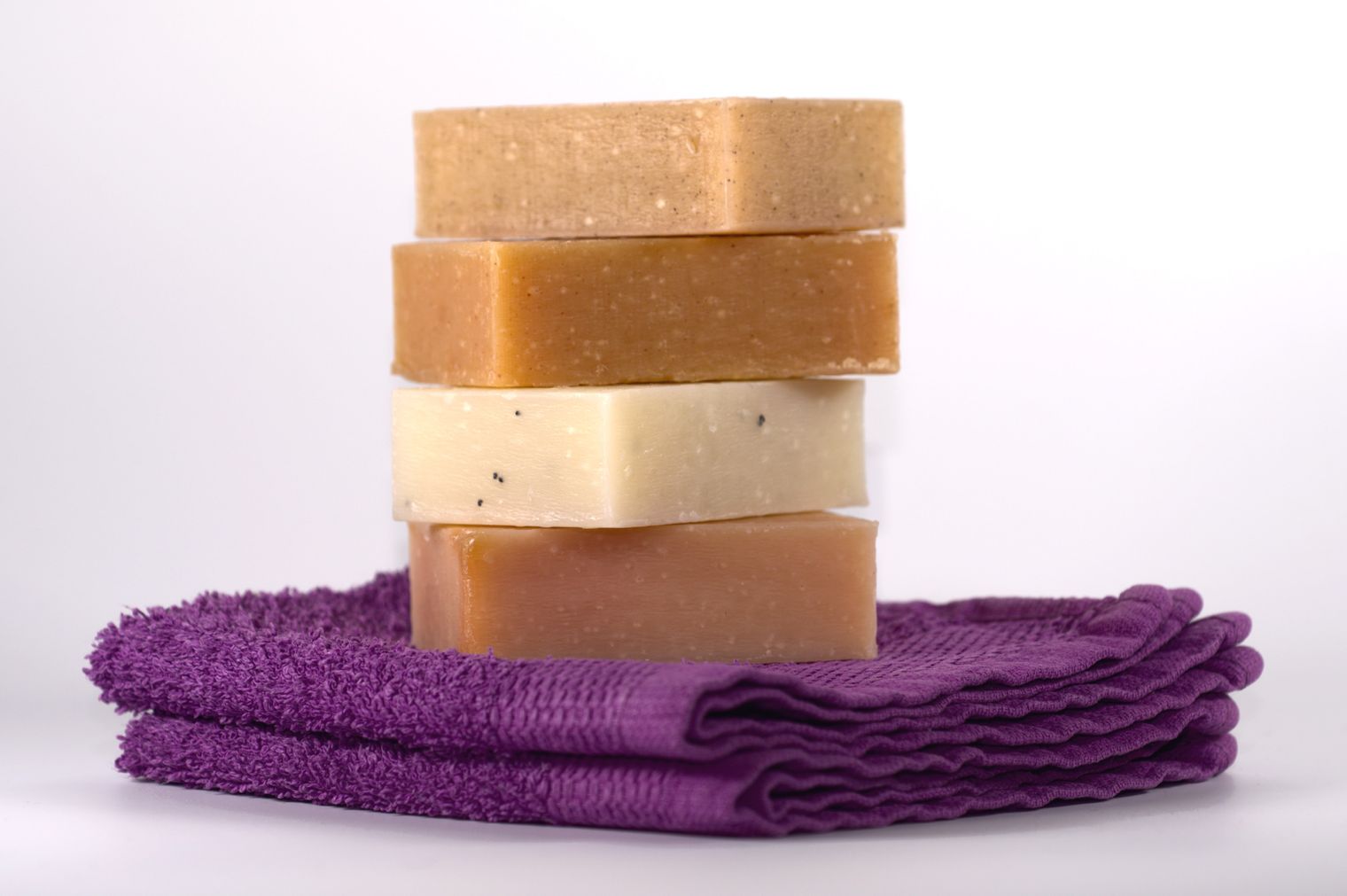Just check the beauty blogs – face oils are all the rage in the skincare world, ranging from the always popular argan oil, castor oil, and jojoba oils, to up and comers like safflower oil, almond oil, and avocado oil.
While there are plenty of fancy options on the market, your skin may benefit from an oil you already have on hand, a high-quality extra virgin olive oil (EVOO).
Before you move your olive oil from your pantry to your vanity, you might be wondering: will olive oil clog my pores?
That’s a fair question. While everyone’s skin is different, there is a benchmark to consider. It’s called the comedogenic rating. Here, we look into the comedogenic rating of olive oil, what that means, and how it’s measured.
What is The Comedogenic Rating of Olive Oil?
We’ll cut to the chase: olive oil is considered to be mildly comedogenic. In its purest form, olive oil has a rating of two on the comedogenic scale, and is surprisingly more clogging than thick and luscious shea butter. What does that mean? We’ll get into it below.
What Are the Potential Benefits of Olive Oil For Skin?
First of all, why should you consider applying olive oil to the skin? While it may sound surprising, there are many reasons why olive oil might be a great addition to your skincare regimen. Here are a few reasons to consider olive oil for skin.
Antioxidants have anti-aging properties.
You may know that olive oil’s antioxidants and omegas protect you from free radicals when consumed. Interestingly enough, olive oil might do the same when applied topically.
Medical News Today reports that the antioxidants in olive oil could prevent premature aging when worn on the skin. Some research also suggests that applying olive oil after being exposed to the sun could protect against cells that cause cancer.
In the study, researchers applied olive oil to the skin of mice that had been exposed to potentially harmful UV rays. Mice with olive oil showed significantly less tumor growth than the mice without olive oil. More studies on humans are needed, but the result is promising.
Olive oil is moisturizing.
Thanks to its high fatty acid content, olive oil delivers moisture to the skin. How so? As explained by skincare resource Paula’s Choice, olive oils contain essential fatty acids that benefit dry skin, including oleic acid, palmitic acid, and linoleic acids.
Olive oil is an emollient, which means it smooths and softens skin. While it gives skin a smooth, moisturized feeling, olive oil does not actually hydrate the skin. As such, you should pair your olive oil with a humectant. A humectant is an ingredient that attracts moisture from the environment or the skincare product and draws it into the skin like a magnet. Some common humectants are hyaluronic acid and glycerin.
Olive oil contains skin-healthy vitamins.
As we know from the health benefits of eating olive oil, olive oil is packed with vitamins. According to Medical News Today, these vitamins also work when applied topically. Vitamins A, D, E, and K, in particular, may benefit the skin. For example, Vitamin E is commonly used to treat eczema, psoriasis, and prevent scarring.
What Does Comedogenic Mean?
“Comedogenic” refers to the likelihood of an ingredient to clog pores. Why does that matter? The skin naturally produces sebum, which is a naturally waxy substance produced on the face. This substance helps protect the skin, keep it hydrated, and keep it waterproof.
When the outflow of sebum from a pore is disrupted, this can lead to the formation of a comedo. Open comedones are called blackheads. Closed comedones, when the follicle is completely blocked, are called whiteheads. While a comedone is a non-inflammatory form of acne, it can lead to the formation of inflammatory acne. This is the red, often painful form of acne that we try to avoid.
The flip side of this term is “non-comedogenic.” When a product is non-comedogenic, that means it is not likely to clog pores, and is therefore less likely to cause acne.
What is a Comedogenic Rating?
To understand how likely a product is to cause a breakout, we have the comedogenic rating. This rating is a scale of zero to five. A product that scores a zero is considered to be non-comedogenic. A product with a five is considered to be the most comedogenic.
Here’s how it breaks down:
- 0: Non-comedogenic
- 1: Slightly comedogenic (has a very low chance of clogging pores)
- 2: Moderately low comedogenic (might clog pores in some people, but is fine for most)
- 3: Moderately comedogenic (will likely clog pores for those with acne or oily skin)
- 4: Fairly high comedogenic (will clog pores for most)
- 5: Severely comedogenic (will almost certainly clog pores)
Some products that have a very high comedogenic rating (four to five) are cocoa butter, coconut oil, coconut butter, palm oil, soybean oil, carrot seed oil, marula oil, wheat germ oil, and flaxseed oil.
Some low-rated oils (0 to 1, i.e. will not clog pores) on the other hand include aloe vera, hazelnut oil, borage oil, tamanu oil, sesame oil, raspberry seed oil, sea buckthorn oil, watermelon seed oil, cucumber seed oil, rice bran oil, and sunflower seed oil -- these are often used as a carrier oil since it's nourishing but doesn't clog.
Some oils that sit close to the middle at 2 are some of beauty's favorites, including of course olive oil, but also evening primrose oil, apricot kernel oil which has high linoleic acid, peach kernel oil, rosehip seed oil, peanut oil, pumpkin seed oil, sweet almond oil, and cottonseed oil.
Of course, none of us want to buy a product that causes clogged pores, which might lead to acne. However, how reliable is the comedogenic rating? Where does it come from? What about sensitive skin how often we use cleanser? How can we use this number to influence our skincare purchases? Read on to learn more.
How is A Comedogenic Rating Determined?
There is some controversy behind the comedogenic rating process. Why? As science-backed blog Lab Muffin explains, the test is not done under real-world conditions. In fact, the most common test is the rabbit ear test.
Launched in cosmetics testing in the 1970s by two famous dermatologists, Albert Kligman and James Fulton, the test involves applying a substance to a rabbit’s ear and waiting to see if there’s a reaction. As the skin on a rabbit’s ears is more sensitive than human skin, they react quickly to comedogenic products.
While the quick results help scientists keep things moving, this test has led to many false positives, as the rabbit skin could have easily been more sensitive than human skin. As an example, Vaseline was considered comedogenic by the rabbit ear test. This was questioned and the false positive was removed.
In 2007, dermatologists Mirshahpanah and Maibach went so far as to say, the rabbit ear model “is unable to accurately depict the acnegenic potential of chemical compounds, and is therefore only valuable for distinguishing absolute negatives.”
So, How Should You Understand the Olive Oil Comedogenic Rating?
As olive oil only has a comedogenic rating of two, it might clog pores for some, but it will be fine for most.
Here’s the takeaway: while everyone’s skin type is different, those with oily skin might find that olive oil clogs pores. People with pimple or pore clogging-prone skin should also be careful about olive oil. As cosmetic chemist Ee Ting Ng told Byrdie, “The fatty acids prevalent in olive oil—and all plant oils and butters in general—are the very food source for acne-causing bacteria and yeasts to grow. Thus, olive oil is not ideal for acne-prone skins.”
Even if you do have oily or acne-prone skin, you can still enjoy the antioxidants and other benefits of olive oil. How? You can try diluting it with another mineral oil that is non-comedogenic. Some non-comedogenic oils (ranging from zero to one on the scale) are grapeseed oil, hempseed oil, and neem oil.
Regardless of the oil you choose – whether olive oil or another – it’s wise to do a spot test before you get started to avoid any negative reactions. Choose a discreet patch of skin, like under your chin or behind your ear. Wash and dry it thoroughly. Then, take a small amount of oil and apply it to the region. If you don’t have a reaction after 24 hours, you’re probably safe to use it.
How To Apply Olive Oil
- Olive oil seals in hydrating moisture, so it should be the last step in your skincare regimen, after any serums and emulsions. (During the day, your SPF should go on top!)
- You could also mix your olive oil with a lotion. As always, it’s best to apply moisturizer right after showering, when your skin is a bit wet.
- Keep it light. You don’t need much to experience the hydration of olive oil. Too much of any natural oil can clog the pores, especially if your skin is sensitive.
- It’s wise to choose an olive oil that is organic and non-GMO. EVOO is the top grade of olive oil, packed with antioxidants and vitamins.
To Sum Up: Understand The Olive Oil Comedogenic Rating
With a rating of two on the scale, olive oil is slightly comedogenic, meaning it may clog pores for those who have acne-prone skin.
That said, everyone’s skin is different, so those looking to experience the benefits of olive oil for the skin should try a spot check to see how their skin reacts.
Sources
https://www.medicalnewstoday.com/articles/321246
https://academic.oup.com/carcin/article/21/11/2085
https://www.paulaschoice.com/ingredient-dictionary
https://www.medicalnewstoday.com/articles/321246
https://www.nativessentials.com/blogs/clean
https://labmuffin.com/fact-check-how-to-use
https://www.ncbi.nlm.nih.gov/pubmed
https://www.byrdie.com/olive-oil-for-skin
https://www.healthline.com/health
Product placement
PJ KABOS 'Family Reserve Organic - Medium'
High Phenolic and 2022 Gold-Award Winner.
Declared as 'One of the World's Best Olive Oils'.
Click here to shop.





